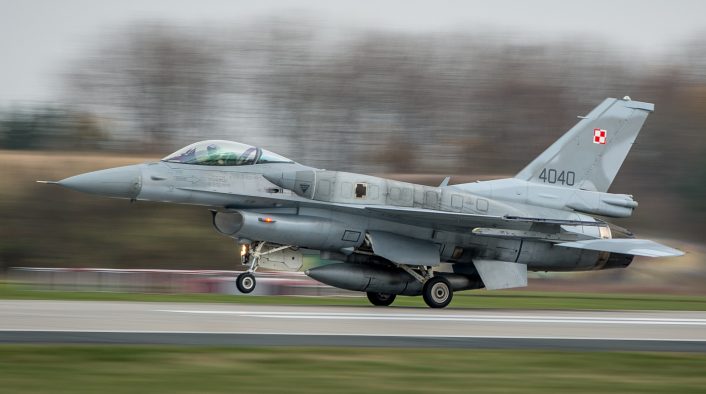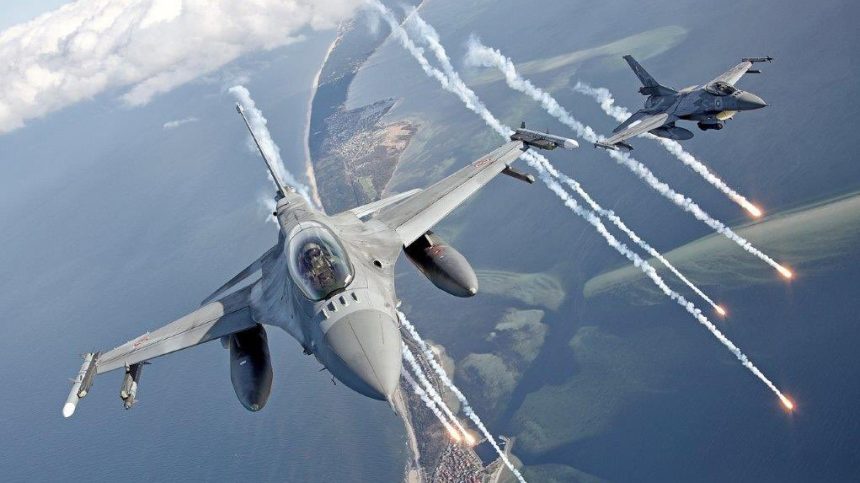As part of the contract, Poland will upgrade its entire fleet of 48 F-16C/D Block 52+ jets to the F-16V Block 72 standard.
The Polish Defense Minister Wladysław Kosiniak-Kamysz has signed a deal worth $3.8 billion for the Mid Life Upgrade of the Polish Air Force’s F-16 fleet. As part of the deal, all 48 F-16C/D Block 52+ jets currently in service will be upgraded to the F-16V Block 72 standard.
The Minister noted that this is an extremely significant agreement for both the Polish defense industry and economy. In fact, the aircraft will be modernized at the Military Aviation Works No. 2 in Bydgoszcz, in the northwest of the country.
Wielka umowa o wartości 3,8 miliardów dolarów na kompleksową modernizację polskich samolotów F-16 podpisana!
To ważny moment dla #WojskoPolskie, ale to też niezwykle ważna umowa dla naszego przemysłu zbrojeniowego i 🇵🇱 gospodarki. 48 samolotów wielozadaniowych F-16 będzie… pic.twitter.com/jpXgeEAidf
— Władysław Kosiniak-Kamysz (@KosiniakKamysz) August 13, 2025
“The current capabilities of the F-16 in the CD version are good, but after 20 years, they are insufficient against threats,” said the Minister. “We must improve reconnaissance capabilities, communication, integration with F-35s, Abrams tanks, and Apaches, as well as the ability to operate in every domain.”
The Polish Air Force’s F-16s were delivered between 2006 and 2008, and are considered to be among the most capable F-16s in Europe. The MLU, which will make them even more capable, comes as Poland continues to ramp up defense spending and plans to allocate 5% of gross domestic product (GDP) to its armed forces in 2026.

Polish F-16 MLU
In October 2024, the U.S. State Department approved the Foreign Military Sale (FMS) to Poland of the F-16 Viper Midlife Upgrade and related elements of logistics and program support for an estimated cost of $7.30 billion, according to the Defense Security Cooperation Agency notice.
As part of the FMS, Poland would receive Improved Programmable Display Generators, Embedded Global Positioning System (GPS) Inertial Navigation Systems (INS) (EGI) with Selective Availability Anti-Spoofing Module (SAASM) or M-Code capability and Precise Positioning Service (PPS), ) AN/APG-83 Active Electronically Scanned Array (AESA) Scalable Agile Beam Radars (SABR), Modular Mission Computer (MMC) 7000AH upgrades, AN/ALQ257 Integrated Viper Electronic Warfare Suites (IVEWS) or AN/ALQ-254V(1) Viper Shield advanced electronic warfare (EW) suites, Joint Helmet Mounted Cueing Systems (JHMCS II), AN/APX-126/127 Advanced Identification Friend or Foe (AIFF) with combined interrogator/transponder (CIT) and Mode 5, among all things, together with the usual plethora of support equipment, training and documentation.
Work on the weapon capabilities appears to be also included, as the package features AGM-158 Joint Air-to-Surface Standoff Missile (JASSM) Flight Test Vehicles, GBU53/B Small Diameter Bomb II (SDB II) Guided Test Vehicles, GBU-39(T-1)/B Guided Test Vehicles and AIM-9X Block II Sidewinder Special and Captive Air Training Missiles, as well as MS-110 reconnaissance pods.
The specific mention of the GBU-39 and GBU-53 is notable, as neither is currently in service in Poland. While there is an FMS notice for up to 1,400 GBU-39s for Poland, released in May 2025, there are not details regarding the GBU-53 acquisition.
With the entire fleet being upgraded to the Block 72 Viper configuration, the Polish F-16s will have a great boost in their capabilities. This will also allow them to better complement the F-35A Husarz that the Polish Air Force is currently introducing.

The F-16V Block 72
The F-16 Block 70/72 is the most advanced variant of the Viper, with the F-16V being the designation for existing aircraft upgraded to the same configuration of newly built jets. So far, six countries have selected the F-16 Block 70/72 and Lockheed Martin has a production backlog of 117 jets, as of February 2025.
Among the new systems installed during the upgrade we can find the APG-83 AESA (Active Electronically Scanned Array) radar, a new Center Pedestal Display (CPD), the AN/APX-126 Advanced IFF (Identification Friend or Foe), Link 16 datalink, full NVIS (Night Vision Imaging System) and JHCMS II (Joint Helmet-Mounted Cueing System II) compatibility, a new Embedded GPS/INS (EGI), a modern commercial off-the-shelf (COTS)-based avionics subsystem, a high-volume, high-speed data bus and the Automatic Ground Collision Avoidance System (Auto GCAS).
“The F-16 Block 70 is the latest edition of one of the most combat proven fighter jets of all time,” said Col. Thomas Obrochta, 162nd Operations Group commander, when the first Slovak F-16 Block 70 arrived at the Arizona ANG’s 162nd Wing. “It includes an advanced APG-83 Active Electronically Scanned Array [AESA] fire control radar, a high-resolution Center Pedestal Display, which provides critical tactical imagery to pilots and allows them to take full advantage of AESA and targeting pod data, advanced weapons integration, and an extended structural life of 12,000 hours– more than 50 percent beyond that of previous production F-16 aircraft.”
The APG-83 Scalable Agile Beam Radar (SABR), developed by Northrop Grumman, is an AESA (Active Electronically Scanned Array) radar designed to fit the F-16 with no structural, power or cooling modifications; in addition, it enables the F-16 to detect, track and identify a greater number of targets (reportedly more than 20 at the same time) faster and at longer ranges while providing all-weather, high-resolution Synthetic Aperture Radar (SAR) mapping. The system also integrated a robust electronic protection to operate in hostile electronic environments.
The Block 70 features a new cockpit concept, with the installation of a Center Pedestal Display (CPD), that provides the pilot with critical tactical data on a high resolution 6’’x8’’ screen. The new screen allows pilots to take full advantage of the new radar and targeting pod data, including new color moving map, a larger and easier representation of the air-to-air situational displays with zoom functionality and last but not least the ability to switch information among displays.









